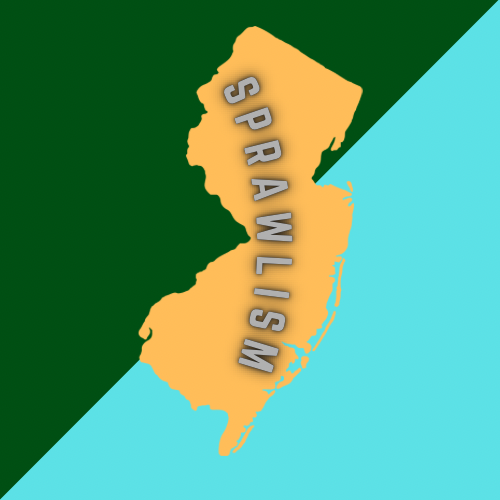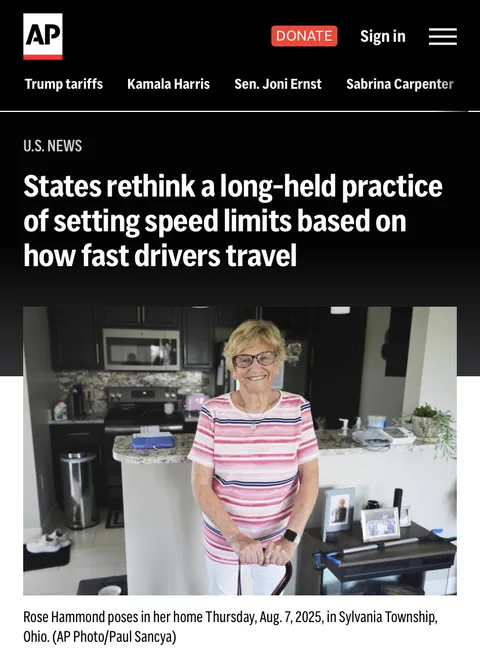In New Jersey, “home rule” is sacred. Cities and towns fiercely guard their power to decide local zoning, housing, and transportation policy—often resisting statewide mandates. But what if this obsession with local control could be redirected toward prosocial rather than antisocial goals? Not to preserve exclusion and car dominance, but to advance climate crisis solutions and feminist urbanism.
Right now, “city rights” often protect car-centric, patriarchal urban design—privileging private convenience over community needs. In hyper-segregated places where neighborhoods are designed to be driven through, not lived in, the harm is magnified.
One underused tool could help turn this around: New Jersey’s Safe Routes to School and Sustainability programs. On paper, this collaboration has the potential to anchor a more caring, climate-minded urbanism—embedding sustainability and equity into the everyday geography of childhood. But as the NJDOT Research RFP 2025 makes clear, the state’s current focus remains on measuring safety outcomes and hosting training days for children. While these intentions may sound positive, one-day bike events, isolated “skills” lessons, and an overemphasis on teaching children to navigate car-dominated streets do little to convince parents it’s safe for them to ride to school.
We don’t need to wait for more “death data” to justify bolder changes. The global evidence gives us the answer: when cities remove parking, restrict car access near schools, and build protected bike lanes, children and caregivers walk and ride. The RFP’s own research scope should be matched with implementation mandates—shovels in the ground, cars off school streets—not just another report on what we already know works.
In my neighborhood of Halcyon Park, developed before World War I, the streets are already scaled for walking and cycling. The car is a latecomer here—squeezed into spaces it was never meant to dominate. Yet most students nearby are still dropped off by car, sometimes just a block from school.
Municipalities should be mandated to participate in these collaborative programs as part of New Jersey’s climate policy—and go further by explicitly aligning school-area improvements with broader street redesign.
Imagine:
Bike lanes that connect neighborhoods to schools and community colleges, where summer programs already draw thousands of children.
Car-free zones during school hours, so kids breathe clean air instead of exhaust.
School lawns transformed into microforests, doubling as flood mitigation and outdoor classrooms.
This isn’t just about transport—it’s about building the social infrastructure for care. Getting children accustomed to collective, active transportation early builds prosocial habits and strengthens community life.
Feminist urbanism asks: Who benefits from our streets, and who is burdened? In most New Jersey cities, traffic flow and parking take precedence over children, caregivers, and pedestrians. And bike riding? Still treated as a recreational perk, not a daily necessity—despite our state being the most densely populated in the U.S.
Policy Shifts That Could Redefine “Home Rule” and Shape a Brighter Future
Car-Free Zones Around Schools: If we can ban liquor stores near schools for “setting a bad example,” why not treat dangerous traffic the same way?
Mandatory Bike Lanes to Schools: Safe, continuous connections between homes and schools should be as common in so-called “suburbs” as they are in cities.
Local Climate Mandates: Use municipal autonomy to ban new drive-thrus, cut parking minimums, and replace asphalt with green space. Drive-thrus encourage idling, speeding, trash, and unhealthy eating—costs communities pay for in public health and climate damage.
Care-Centered Street Design: Intersections, sidewalks, and crossings built for stroller users, wheelchair users, and elders—not just drivers. Care should be a design standard, not an afterthought.
State Incentives for Feminist Planning: Reward cities in climate-vulnerable areas that integrate equity, climate adaptation, and caregiving needs into their street design.
Reclaiming city rights for care and climate is not just possible—it’s urgent. New Jersey’s density gives us a unique advantage: everything is close enough to reimagine our streets around people, not cars. The question is whether local power will continue to defend the status quo—or be mobilized to create cities worth walking and biking through.






